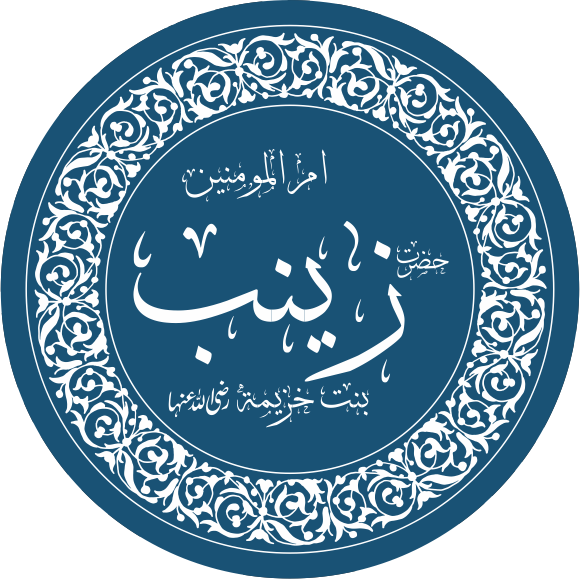Zaynab Bint Khuzaymah – Mother of the Believers
Published on: 15-Sep-2022
(Cite: Hamdani, Mufti Shah Rafi Uddin & Khan, Dr. (Mufti) Imran. (2022, September 15). Zaynab Bint Khuzaymah – Mother of the Believers. Encyclopedia of Muhammad  .)
.)
Zaynab Bint Khuzaymah (زینب بنت خزیمۃ) was one of “The Mothers of the Faithful”, and one of those Muslim women who were known for generosity and mercifulness. 1 Due to her charitable acts, she was given the title of ‘Umm Al-Masakeen’ (امّ المساکین) or ‘Mother of the Needy’. 2 She was distinguished from the other “Mothers of the Faithful” due to her compassion, patience, benevolence and struggle for the sake of Allah.
was one of “The Mothers of the Faithful”, and one of those Muslim women who were known for generosity and mercifulness. 1 Due to her charitable acts, she was given the title of ‘Umm Al-Masakeen’ (امّ المساکین) or ‘Mother of the Needy’. 2 She was distinguished from the other “Mothers of the Faithful” due to her compassion, patience, benevolence and struggle for the sake of Allah.
Lineage
She was Zaynab bint Khuzaymah ibn Al-Harith ibn Abdullah ibn Amr ibn Abd Manaf ibn Hilal ibn Sa’sa’ah ibn Muawiyah ibn Hawazin. 3 Her mother was Hind bint Awf ibn Al-Harith. Her half-sister, Maymunah bint Al-Harith , 4 also had the honor of becoming a mother of the faithful after the demise of Zaynab
, 4 also had the honor of becoming a mother of the faithful after the demise of Zaynab  . Maymunah
. Maymunah  was the last woman Prophet Muhammad
was the last woman Prophet Muhammad  married.
married.
Life before Marriage with the Holy Prophet 
Initially, she was married to Tufail bin Al-Harith bin Abdul Muttalib, who divorced her. 5 Then, she married Tufail’s brother Ubaydah  who was martyred in the battle of Badr. 6
who was martyred in the battle of Badr. 6
Marriage with Prophet Muhammad 
After the martyrdom of her husband, Prophet Muhammad  proposed to her on humanitarian grounds, 7 and made an example in front of his companions, to take care of the widows whose husbands were martyred in the way of Allah. 8 Hence, the Holy Prophet
proposed to her on humanitarian grounds, 7 and made an example in front of his companions, to take care of the widows whose husbands were martyred in the way of Allah. 8 Hence, the Holy Prophet  married Zaynab bint Khuzaymah
married Zaynab bint Khuzaymah  in the month of Ramadan, 9 after his marriage with Hafsa bint Umar
in the month of Ramadan, 9 after his marriage with Hafsa bint Umar 10 and gave her a dowry of 400 Dirhams. 11
10 and gave her a dowry of 400 Dirhams. 11
Demise
After her marriage, Zaynab bint Khuzaymah  spent most of her time feeding the poor and destitute people. 12 She only spent eight months in the Holy Prophet’s
spent most of her time feeding the poor and destitute people. 12 She only spent eight months in the Holy Prophet’s house and passed away in Rabi Al-Thani during the fourth year of the Hijrah, 13 at the age of around 30. 14 No other mother of the faithful died during the life of Holy Prophet
house and passed away in Rabi Al-Thani during the fourth year of the Hijrah, 13 at the age of around 30. 14 No other mother of the faithful died during the life of Holy Prophet  after her. 15 Prophet Muhammad
after her. 15 Prophet Muhammad  led her funeral prayer and laid her to rest in Jannat Al-Baqee. 16
led her funeral prayer and laid her to rest in Jannat Al-Baqee. 16
- 1 Abu Al-Fadl Ahmed bin Ali Al-Asqalani (1415 A.H.), Al-Isaba fi Tamyeez Al-Sahaba, Dar Al-Kutub Al-Ilmiyah, Beirut, Lebanon, Vol. 8, Pg. 157.
- 2 Izz Al-Din Ali ibn Muhammad Al-Shaibani ibn Athir (2003), Usud Al-Ghaba Fi Ma’rifat Al-Sahaba, Maktaba Al-Tawfiqiya, Cairo, Egypt, Vol. 7, Pg. 122.
- 3 Ahmed ibn Yahya ibn Jabir ibn Dawood Al-Baladhuri (1996), Jumal Min Ansab Al-Ashraf, Dar Al-Fikr, Beirut, Lebanon, Vol. 1, Pg. 429.
- 4 Ali ibn Ibrahim ibn Ahmed Al-Halabi (1427 A.H.), Al-Seerah Al-Halabiyah, Dar Al-Kutub Al-Ilmiyah, Beirut, Lebanon, Vol. 3, Pg. 446.
- 5 Abul Fida Ismael ibn Kathir Al-Damishqi (1976), Al-Seerat Al-Nabawiyah le-ibn Kathir, Dar Al-Marifat lil Taba’at wal-Nashr wal-Tawzi, Beirut, Lebanon, Vol. 3, Pg. 173.
- 6 Muhammad ibn Saad Al-Basri (1990), Tabqat Al-Kubra, Dar Al-Kutub Al-Ilmiyah, Beirut, Lebanon, Vol. 8, Pg. 91.
- 7 Akram Zia Al-Umri (1994), Al-Seerah Al-Nabawiyah Al-Sahiha, Maktaba Al-Uloom Al-Hikam, Madinah Al-Munawwarah, Saudi Arabia, Vol. 2, Pg. 650.
- 8 Muhammad Al-Tayyab Al-Najjar (N.D.), Al-Qol Al-Mubeen fi Seerat Syed Al-Mursaleen, Dar Al-Nadwa Al-Jadeeda, Beirut, Lebanon, Pg. 406.
- 9 Muhammad ibn Saad Al-Basri (1990), Tabqat Al-Kubra, Dar Al-Kutub Al-Ilmiyah, Beirut, Lebanon, Vol. 8, Pg. 91.
- 10 Muhammad ibn Yusuf Al-Salihi Al-Shami (1993), Subul Al-Huda wal-Rashad fe Seerat Khair Al-Abad, Dar Al-Kutub Al-Ilmiyah, Beirut, Lebanon, Vol. 11, Pg. 205.
- 11 Abd Al-Rahman ibn Abdullah Al-Suhaili (2000), Al-Raudh Al-Unf fe-Sharha Al-Seerat Al-Nabawiyah, Dar Al-Ihya Al-Turath Al-Arabi, Beirut, Lebanon, Vol. 7, Pg. 566.
- 12 Muhammad ibn Yusuf Al-Salihi Al-Shami (1993), Subul Al-Huda wal-Rashad fe Seerat Khair Al-Abad, Dar Al-Kutub Al-Ilmiyah, Beirut, Lebanon, Vol. 11, Pg. 205.
- 13 Abu Al-Fadl Ahmed bin Ali Al-Asqalani (1415 A.H.), Al-Isaba fi Tamyeez Al-Sahaba, Dar Al-Kutub Al-Ilmiyah, Beirut, Lebanon, Vol. 8, Pg. 157.
- 14 Muhammad ibn Saad Al-Basri (1990), Tabqat Al-Kubra, Dar Al-Kutub Al-Ilmiyah, Beirut, Lebanon, Vol. 8, Pg. 92.
- 15 Ahmed Ghalosh (2004), Al-Seerat Al-Nabawiyah wa Al-Da'wa fi Ahd Al-Madani, Moassasatu Al-Risala, Beirut, Lebanon, Pg. 127.
- 16 Ahmed ibn Yahya ibn Jabir ibn Dawood Al-Baladhuri (1996), Jumal Min Ansab Al-Ashraf, Dar Al-Fikr, Beirut, Lebanon, Vol. 1, Pg. 429.